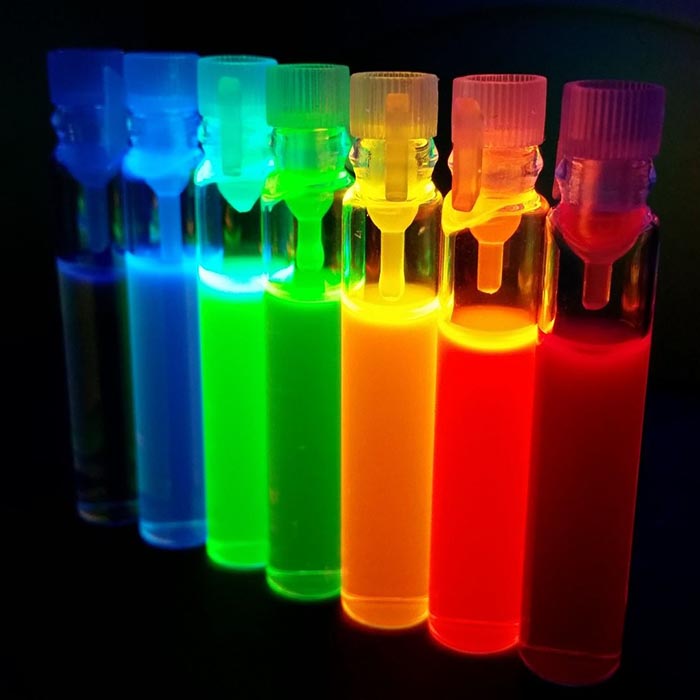
By: Teresa N.
Year: 2023
School: Westminster High
Grade: 12
Science Teacher: Huy Pham
In the realm of materials science, Teresa embarked on an intriguing science project aimed at synthesizing hydrophobic carbon quantum dots (HCDs) and investigating their potential as a fluorophore for polydimethylsiloxane (PDMS) silicone. By making PDMS fluorescent, Teresa aimed to address the challenge of detecting tears and leaks in transparent silicone, which often lead to significant profit losses in the manufacturing industry.
Polydimethylsiloxane (PDMS) is a widely used silicone polymer due to its desirable properties such as elasticity and biocompatibility. However, its transparent nature poses difficulties in identifying tears and leaks, resulting in substantial repair costs for manufacturers. To tackle this issue, Teresa explored the use of hydrophobic carbon quantum dots (HCDs) as a potential fluorophore for PDMS silicone.
Teresa’s experiment involved several key steps to synthesize hydrophobic carbon quantum dots and evaluate their interaction with PDMS silicone. The following procedures were followed:
- Synthesis of Hydrophobic Carbon Quantum Dots:
- Teresa prepared a solution by combining 1 mL Pluronic F-68 Non-ionic Surfactant, 1 mL o-phosphoric acid, and toluene.
- The solution was subjected to microwave treatment for 90 minutes at 150°C to promote homogeneity.
- Afterward, the hydrophobic carbon dots were filtered to remove impurities and characterized using infrared (IR) and ultraviolet (UV) spectra.
- Mixing Hydrophobic Carbon Quantum Dots with PDMS:
- Teresa tested different combinations of nanoparticles and PDMS silicone.
- The mixtures were spread onto a glass slide for analysis of fluorescence.
- Analysis of Fluorescence and Gas Permeability:
- Teresa utilized a spectrophotometer to examine shifts in wavelengths and assess the effects of HCDs on gas permeability.
Teresa’s findings shed light on the viability of hydrophobic carbon quantum dots as a fluorophore for PDMS silicone. Here are the key results she obtained:
- UV light analysis indicated that the optimal amount of HCDs was less than 0.5 mL, as higher concentrations led to black spotting, suggesting an excess of HCDs.
- Increasing the amount of HCDs resulted in higher absorbance levels. However, the presence of functional groups necessary for fluorescence was scarce in the samples.
- Fluorescence was not visibly detected, possibly due to quenching caused by PDMS or insufficient quantities of HCDs.
- The relative intensity of fluorescence decreased, making it imperceptible to the human eye.
